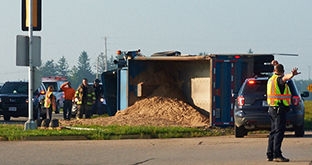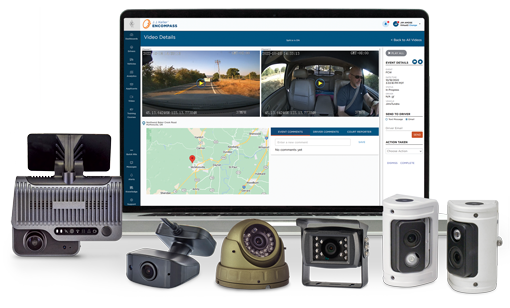Sr. Industry Business Advisor — J. J. Keller & Associates, Inc.
FMCSA's Crash Preventability Determination Program Relaunched
Three benefits to using DataQs to challenge the preventability of certain crashes under FMCSA's Crash Preventability Determination Program.
Published On: 05/08/2020


Written by:
Tom Bray
On Friday, the Federal Motor Carrier Safety Administration (FMCSA) announced motor carriers and drivers can now use DataQ’s to challenge the preventability of certain crashes under the Crash Preventability Determination Program.
The release of the new program is exciting news for carriers and drivers!
First, the removal of a crash from the Compliance, Safety, Accountability (CSA) calculations will lower the carrier’s CSA Crash Indicator BASIC score.
Second, the removal of non-preventable crashes will positively impact a carrier’s insurance premiums and business opportunities, as many of them share their CSA scores with customers and insurance providers.
Finally, employers will have a better understanding of a driver’s history as the Pre-employment Screening Program (PSP) will denote non-preventable crashes within the list all CMV crashes for the past five years.
Non-Preventable Crash Types
The FMCSA has identified the following list of crash types as non-preventable:
Struck in the Rear type of crash: when the CMV was struck in the rear or on the side at the rear.
Wrong Direction or Illegal Turns type of crash: when the CMV was struck by a motorist driving in the wrong direction; or by another motorist in a crash when a driver was operating in the wrong direction; or by a vehicle that was making a U-turn or illegal turn.
Parked or Legally Stopped type of crash: when the CMV was struck while legally stopped at a traffic control device (e.g., stop sign, red light, or yield); or while parked, including while the vehicle was unattended.
Failure of the Other Vehicle to Stop type of crash: when the CMV was struck by a vehicle that did not stop or slow in traffic; or by a vehicle that failed to stop at a traffic control device.
Under the Influence type of crash: when the CMV was struck by an individual under the influence (or related violation, such as operating while intoxicated), according to the legal standard of the jurisdiction where the crash occurred, where the individual was charged or arrested, failed a field sobriety or other test, or refused to test; or by another motorist in a crash where an individual was under the influence (or related violation such as operating while intoxicated), according to the legal standard of the jurisdiction where the crash occurred, where the individual was charged or arrested, failed a field sobriety test or other tests, or refused to test.
Medical Issues, Falling Asleep, or Distracted Driving type of crash: when the CMV was struck by a driver who experienced a medical issue which contributed to the crash; or by a driver who admitted to falling asleep or admitted to distracted driving (e.g., cellphone, GPS, passengers, other).
Cargo/Equipment/Debris or Infrastructure Failure type of crash: when the CMV was struck by cargo, equipment, or debris (e.g., fallen rock, fallen trees, unidentifiable items in the road); or crash was a result of an infrastructure failure.
Animal Strike type of crash: when the CMV struck an animal.
Suicide type of crash: when the CMV struck an individual committing or attempting to commit suicide.
Rare or Unusual type of crash: when the CMV was involved in a crash type that seldom occurs and does not meet another eligible crash type (e.g., being struck by an airplane or skydiver or being struck by a deceased driver).
Crash Preventability Determination Process
CMV crashes that occurred on or after August 1, 2019, are eligible for consideration under the relaunched program. Here is the process FMCSA follows:
STEP 1: Carrier or driver submits a Request for Data Review (RDR) in FMCSA’s DataQ.
STEP 2: The FMCSA determines if the crash falls into one of the covered categories, then reviews the request, the police accident report and other supporting information the carrier provides, the details of the crash, and the condition of the driver and vehicle prior to the crash.
STEP 3: The FMCSA then determines that the crash is either not preventable, preventable, or that they cannot make a decision on the crash ("Undecided"). They will post the final determination to the Safety Measurement System (SMS).
- If a crash is deemed non-preventable, the FMCSA will remove the crash from the carrier’s “crash indicator” CSA score, reducing the chance the carrier will be targeted with enforcement action.
- As mentioned above, they will also add a note to the PSP, indicating that the crash was not preventable, reducing the odds that the driver involved would not be hired due to his or her crash history.
It should be noted that your odds of proving a crash was not preventable is increased exponentially with the use of dash cam technology. Video can be used to support your argument that a crash meets one of the types of preventable crashes defined above. For example, a video clearly shows a deer jumping in front of the truck just prior to impact fits the Animal Strike category and clearly preventable.
According to trucking defense attorney, Doug Marcello, “The reality is that we live in a YouTube world. If it’s not on video, it doesn’t exist. Studies show that automobile drivers cause most accidents. It is only logical that video evidence would frequently support your defense. Why not have proof that you or your driver were not at fault?”
Request more information about the Encompass® Video solution or talk with a compliance specialist today at 855.693.5338.
You may also enjoy the following articles:
Sign up for our newsletter!
We'll help you stay on top of regulations, best practices, and fleet industry news. Sign up to receive a monthly email notification with links to our most recent blog articles, free resources, and event invites.
